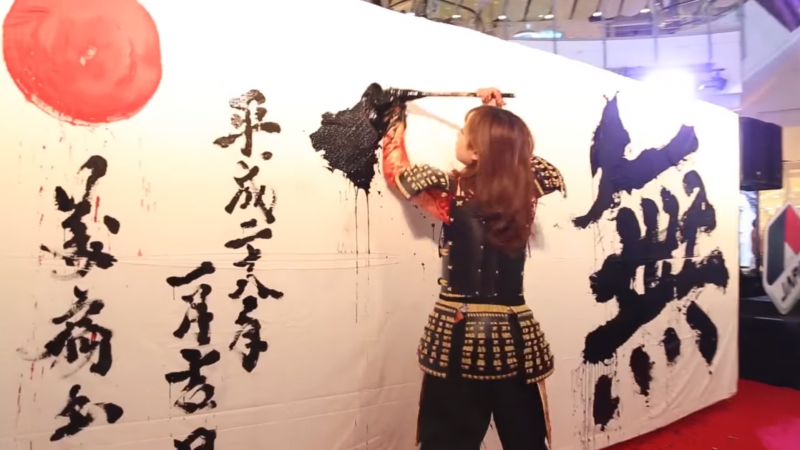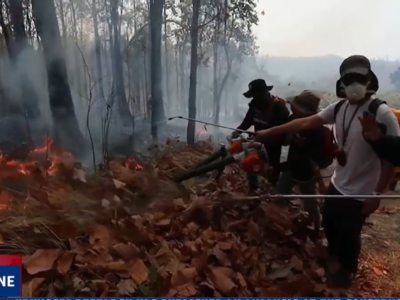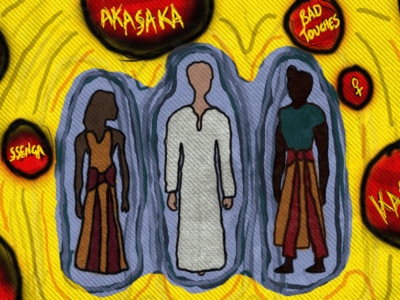
Japanese calligrapher Bisen Aoyagi at the Japan Expo in Thailand in 2016. Screencap from official Bisen Aoyagi YouTube Channel.
A recent viral tweet demonstrated how much Japanese popular culture values the art of writing and showcased an up-and-coming calligrapher who has garnered a host of fans because of her personality and penmanship.
In mid-September, Aoyagi Bisen posted a video to her Twitter account that showed how to write what is widely regarded to be one of the most obscure–and complex–Chinese characters: biang, used exclusively when writing “biangbiang noodles” in Mandarin.
From the perspective of anyone who is familiar with writing Chinese characters, known in Japanese as kanji, the character for biang is almost ridiculously complicated, taking 56 strokes to write.
Aoyagi's video has been shared on Twitter so far more than 149,000 times.
最も複雑と言われる漢字の一つ。
中国の漢字です( ´ ▽ ` )ノ!
「ビィアン」と読みます。麺の種類のひとつで「ビャンビャン麺」と呼ばれる麺を漢字で書く場合に使われるようです(^ ^)! 美扇筆ー半紙用ーを使用してます。 pic.twitter.com/GXMxPCmBro— aoyagibisen (@aoyagibisen) September 25, 2017
Here is the one Chinese character that is said to be the most complicated. It's used in China! ( ´ ▽ ` )ノ The character is read as “biang”, and is used when writing the name of the noodle dish known as biangbiang-men (^ ^)!
The character was written using an original Bisen brush and hanshiyo paper.
With just 52 tweets so far, 27-year-old Aoyagi is a relative newcomer to Twitter, so her “biang” tweet was truly a sudden viral sensation. Born in Osaka, Aoyagi says in her official bio that she started learning Japanese calligraphy from the age of four from her grandmother.
By the age of 17 she was licensed as a calligraphy instructor, and she has continued her study of the art ever since. Today Aoyagi works as a professional calligrapher, performing in exhibitions around the world, representing Japan, while selling her own brand of calligraphy supplies.
#新しいプロフィール画像 pic.twitter.com/oCWZoa8xKm
— aoyagibisen (@aoyagibisen) July 21, 2017
Here is a new profile picture of me.
On Twitter, Aoyagi regularly posts short videos of beautiful calligraphy demonstrations.
輝いてる!#青柳美扇 #美扇 #美扇筆 pic.twitter.com/Vdaqj0u5sw
— aoyagibisen (@aoyagibisen) August 2, 2017
To shine! #AoyagiBisen
— aoyagibisen (@aoyagibisen) March 20, 2017
“Ambition”
From time to time, she also provides tips and lessons on how to perfect Japanese calligraphy.
美文字レッスン#aoyagibisen #書道家 #青柳美扇 pic.twitter.com/b5AK1O36zG
— aoyagibisen (@aoyagibisen) March 9, 2017
How to write beautiful Chinese characters. #aoyagibisen
And other times, Aoyagi provides virtuoso performances that more resemble abstract art. In this tweet, Aoyagi challenges herself to write a 108-stroke abstract form made up of different kanji elements.
108画の漢字。
煩悩だらけでタイムチャレンジ。
筆で1分以内に書けたら凄くない? pic.twitter.com/ET1BfhSR9s— aoyagibisen (@aoyagibisen) October 3, 2017
A kanji with 108 strokes.
To help shoo away some “earthly desires”, here's a time challenge. Wouldn't it be awesome if I could write this in one go in a minute or less?
Follow Aoyagi Bisen on Twitter and Instagram to see more artwork and kanji demonstrations. Her website also features some more of her calligraphy, some of which is for sale.






